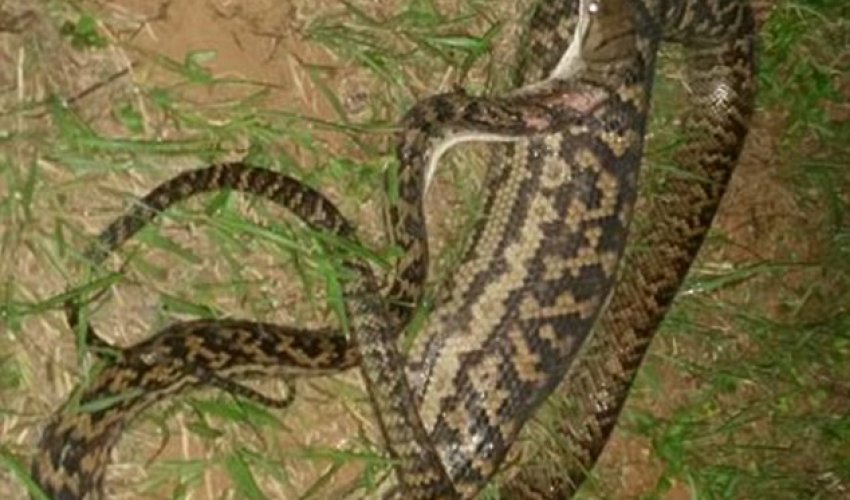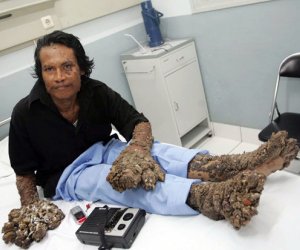The swollen belly of a python after eating a distraught family's cat

Huge pythons have swallowed five pet cats in the space of just one month.
The owner of Cairns Snake Removals in tropical North Queensland, David Walton, told Daily Mail Australia he had been called out to five jobs in the past month.
'It's upsetting for people to lose their pets like that,' he said. 'There's nothing worse than coming in when the kids are crying and they've lost their cat.'
Incredible images uploaded to his Facebook page show Amethystine (Scrub) Pythons - some close to five metres in length - on family properties with enormous bulges in their stomachs.
Mr Walton said the python's ruthless method of killing would be quite distressful for young children watching on.
The scrub python bites and grabs the cat and then quickly intertwines the animal with its huge frame, squeezing and suffocating until it senses no more heartbeat.
At that point it loosens its grip and swallows the cat.
Shockingly, Mr Walton said that while the amount of cats being taken by pythons was definitely above average for the area, it wasn't as alarming to him as it was to most other people.
'My record is ten cats in a single month – so we haven't broken the record yet,' he said.
He said it was important that cat-owners knew the dangers of leaving animals out at night-time.
'The Amethystine Python is a nocturnal hunter,' Mr Walton wrote online.
'In cases where animals or pets are taken during the day, (it) is a result of the Python either picking up a scent or spotting the animals movement or heat and then placing it's self in a ambush position.
Susan Swanston, who owns one of the five cats taken by pythons this month, took to Facebook to warn other pet-owners that the pythons can strike at any time of the day.
'We are diligent about locking the animals in at night but we discovered the snake about 6pm and he had long since had his meal,' she wrote.
'I was thinking about trying our other cats on a harness and lead and taking them out for a walk so we are with them.'
The Scrub Python is the largest native snake in Australia, and one of the six largest in the world.
It typically lives in bushland and eats birds, rats, possums and occasionally larger mammals like wallabies.
(www.dailymail.co.uk/news/article-3429464/No-place-cat-Queensland-Five-owners-left-distraught-family-pets-eaten-pythons-month.html#ixzz3zBIv6tJI)





www.ann.az
Similar news
Similar news
Latest news 
More news 



































 Photo
Photo 

 Video
Video 

